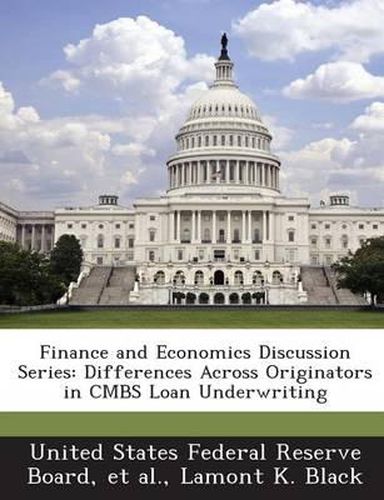Readings Newsletter
Become a Readings Member to make your shopping experience even easier.
Sign in or sign up for free!
You’re not far away from qualifying for FREE standard shipping within Australia
You’ve qualified for FREE standard shipping within Australia
The cart is loading…






Differences in the organizational structure of CMBS loan originators may reflect differences in the incentives they face for underwriting risky loans. We treat an originator’s type–that is, commercial bank, investment bank, insurance company, finance company, conduit lender, or foreign-owned entity–as a proxy for incentives related to warehousing risk, balance sheet lending, and regulatory constraints. After controlling for observable credit characteristics of over 30,000 loans securitized into CMBS after 1999, we find considerable differences in loan performance across originator types. The results suggest that moral hazard–captured by lack of warehousing risk-negatively affected the quality of loans underwritten by conduit lenders. On the other hand, despite opportunities for adverse selection, balance sheet lenders–commercial banks, insurance companies and finance companies–actually underwrote higher quality loans.
$9.00 standard shipping within Australia
FREE standard shipping within Australia for orders over $100.00
Express & International shipping calculated at checkout
Differences in the organizational structure of CMBS loan originators may reflect differences in the incentives they face for underwriting risky loans. We treat an originator’s type–that is, commercial bank, investment bank, insurance company, finance company, conduit lender, or foreign-owned entity–as a proxy for incentives related to warehousing risk, balance sheet lending, and regulatory constraints. After controlling for observable credit characteristics of over 30,000 loans securitized into CMBS after 1999, we find considerable differences in loan performance across originator types. The results suggest that moral hazard–captured by lack of warehousing risk-negatively affected the quality of loans underwritten by conduit lenders. On the other hand, despite opportunities for adverse selection, balance sheet lenders–commercial banks, insurance companies and finance companies–actually underwrote higher quality loans.